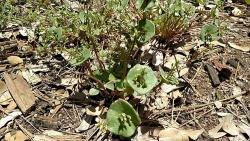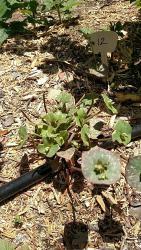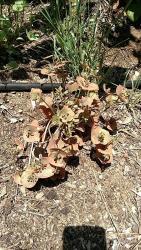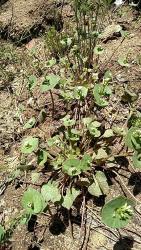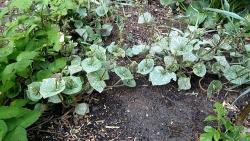Wow, thanks for the great responses! I came to the right place

I checked out all those references, a few of those I saw myself before. There's a mixed bag of images of perfoliata, some showing variegation but I suppose that's to be suspected since it's technically a mutation?
Here I have some images of other examples on the property, all showing some form of variegation, it appears more as the specimen get's older, some showing differing amounts. If they all share the same trait, then perhaps it's a local subspecies that is well adapted to the area (for other reasons) that just happens to have passed on the variegated mutation?
http://www.efloras.org/florata...
"Leaves: blades livid or beet red or purplish abaxially and gray-green " - noticed some examples of red/purple
https://en.wikipedia.org/wiki/...
"As the days get hotter, the leaves turn a deep red color as they dry out." - interesting as I did find some examples of plants in a dryer area that have start to wilt and displaying the red coloration (shown in pic)
It appears some local creature has been nibbling some of the leaves. As I'm coming from the sustainable/permaculture angle, I'm interested in discovering the edible properties myself. I plan to eat some - anyone think it's a bad idea? haha
http://www.northernbushcraft.c...
-this is listed on their "safe-list" ( edible wild plants that are easy to identify and have no poisonous look a likes)
David
